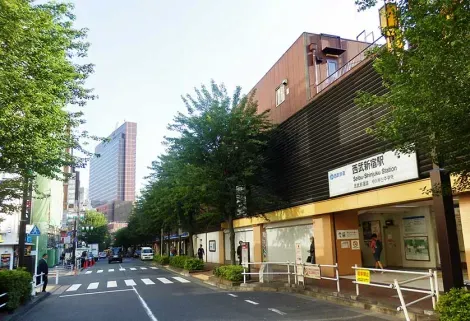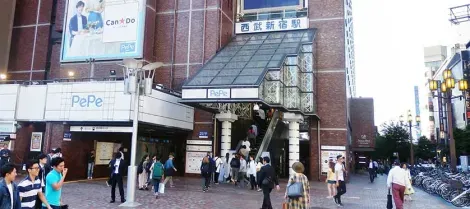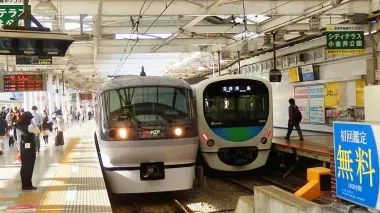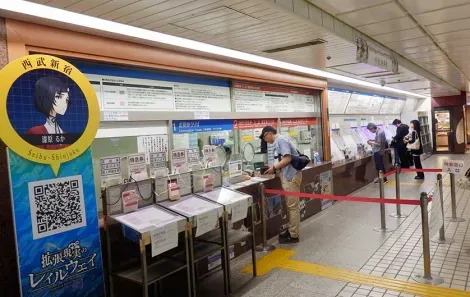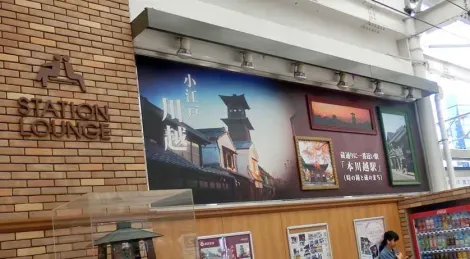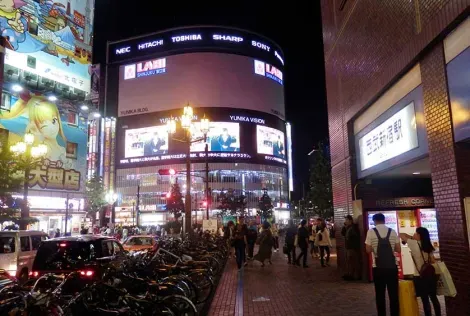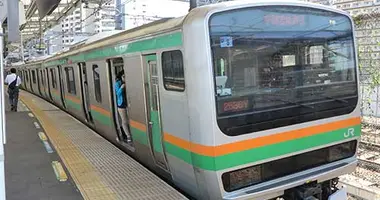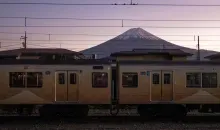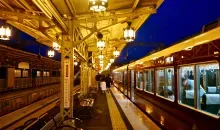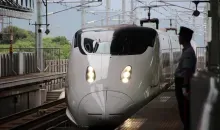Seibu Shinjuku Station 西武新宿駅
Seibu Shinjuku Station in Shinjuku, Tokyo serves only one private railway company, Seibu Railways. Seibu Shinjuku Station is the terminus of the Seibu Shinjuku Line to Hon Kawagoe Station in Kawagoe in Saitama Prefecture.
Shinjuku Station, in the Shinjuku district of Tokyo, is often called the busiest train station in the world, serving more than 3.5 million passengers every day. It is also one of the most difficult to navigate due to the many train lines the station serves and due to the many department stores, retail outlets and restaurants it houses.
Seibu Shinjuku Station on the other hand is not part of Shinjuku Station. It is a separate train station all on its own about 500 meters north of Shinjuku Station.
Seibu Shinjuku Station serves only one private railway company, Seibu Railways. Navigation is easy here even though the station complex serves multiple purposes.
When walking from Shinjuku Station, Seibu Shinjuku Station is easy to spot due to the iconic tall and narrow Prince Hotel built right on top of the main station building. The Prince Hotel chain belongs to the Seibu Railway Company.
The south / main entrance to the station is from Yasukuni Dori Avenue, the wide road separating the vicinity of Shinjuku Station from its northern environs.
To reach the train station area on the second floor of the building, you have to pass through a part of the Pepe department store occupying the southern part of the building.
If you take the escalator up, you walk by a number of cake shops before you get to the station area. Though there are never any lines at any of the cake shops, they must do brisk business since a good part of the daily 175,000 passengers using the station walk by them, many on daily commutes.
Train Lines
Seibu Shinjuku Station is the terminus of the Seibu Shinjuku Line, running to Hon Kawagoe Station in Kawagoe in Saitama Prefecture.
At Kodaira Station, about halfway to Hon Kawagoe, the Haijima Line branches off from the Seibu Shinjuku Line and takes its separate course to Haijima Station in Akishima City, north of Tachikawa.
Trains in both directions start out of Seibu Shinjuku Station.
Some trains cover only parts of the lines. There are trains destined for Tanashi (covering both lines) and for Tamagawa Josui Station in direction Haijima (linking at Tamagawa Josui to the Tama Toshi Monorail).
There are also trains bound for Shin Tokorozawa in the direction of Hon Kawagoe. While Shin Tokorozawa might not be much of a popular destination, those trains do get you to Tokorozawa Station in Tokorozawa where you can transfer to the Seibu Ikebukuro Line which provides a convenient connection to the scenic Chichibu area.
Trains
The Koedo Limited Express takes you to Hon Kawagoe Station and thus into close walking distance to the historic center of Kawagoe in a mere 46 minutes. Seat reservations are necessary for the Koedo Limited Express.
Regular express trains bound for Hon Kawagoe operate as express trains only up to Tanashi Station and then turn into local trains, stopping at every station.
Kodaira Station, where the Haijima Line branches off from the Seibu Shinjuku Line, is two stops before Tanashi Station.
Kawagoe Trains
The Seibu Railway Company heavily advertises Koedo, the scenic and historic center of Kawagoe city in Saitama at Seibu Shinjuku Station. Indeed, Koedo is definitely worth a day trip. The Seibu Shinjuku Line provides the fastest service and most convenient connection there from Shinjuku.
Station Layout
Seibu Shinjuku Station features three tracks on three platforms. All major facilities are located close to the South Exit which serves as the main gateway towards Shinjuku Station.
The North Exit of the station is rather small and usually unmanned. It is not very frequented but if you plan to walk towards the lively and nearby Okubo neighborhood that would be the exit to take.
Station Environs
Seibu Shinjuku Station is located right next to the Kabukicho entertainment district. Kabukicho used to be a famously raunchy red light district up until the mid-2000's but has been thoroughly cleaned up since then.
The street stretching along the whole expanse of Seibu Shinjuku Station on its eastern side used to be called American Boulevard. It used to be home to some cheap but very convenient capsule hotels and a great number of "Philippine Clubs" and the like, all of them more or less fronts for prostitution outlets. Girls in heavy make-up accosted passers-by right on the street late at night, sometimes aggressively so.
Today, hardly any trace of those times is left. American Boulevard has been renamed Brick Street, the name drawing on the brick walls lining the exterior of the station. The street’s leafy sidewalks are home to a variety of restaurants, most notably the Russian Restaurant Sungari (www.sungari.jp, in Japanese).
The Yunika building with its multiple large video screens constantly playing music clips is right in front of the South Exit of Seibu Shinjuku Station.
From outside the South Exit you also get a great view towards the Nishi Shinjuku skyscrapers.
Crossing Yasukuni Dori Avenue on the right side of the train bridge towards Shinjuku Station will get you straight to the scenic drinking alleys of Omoide Yokocho.
Around Shinjuku Station
Shinjuku shopping offers the most consumer choice of anywhere in Tokyo. Both Odakyu and Keio have department stores at the station as does Seibu at the Seibu-Shinjuku Station.
Among the thousands of cafes, restaurants and stores in the immediate vicinity of Shinjuku Station are the Isetan, Mitsukoshi and Marui department stores, Lumine Este, and Kinokuniya bookshop (all east exit).
HMV and Tower Records, Takashimaya Times Square, Tokyu Hands (all south exit)
Odakyu and Keio department stores, Bic Camera, and Yodobashi Camera (all west exit).
West of Shinjuku Station is Tocho (the Tokyo Metropolitan Government Building) and the surrounding cluster of skyscrapers including the Shinjuku NS Building, KDDI Building, Shinjuku Sumitomo Building, the Sompo Building, and the Nomura building. Shinjuku Chuo Koen Park is in West Shinjuku.
East of Seibu-Shinjuku Station is the raucous, red-light entertainment district of Kabukicho and the cramped drinking alley of Golden Gai.
Near the Shinjuku Nishi-guchi subway station on the Oedo Line is Shomben Yokocho ("Piss Alley") another low-rise drinking street.
To the east of Shinjuku Station is Tenryuji Temple, Shinjuku Gyoen Park and north of the park, the gay quarters of Shinjuku Nichome.




